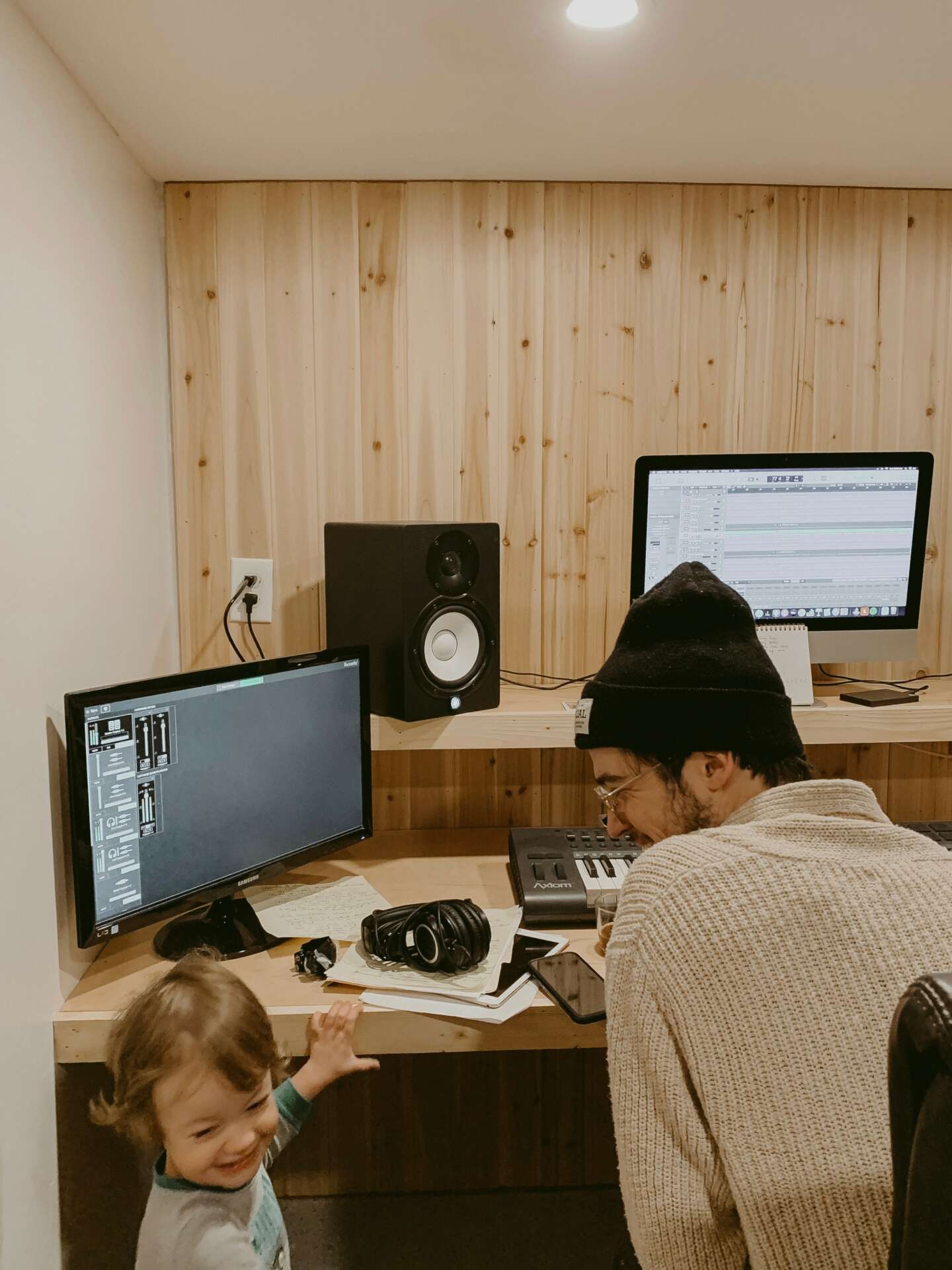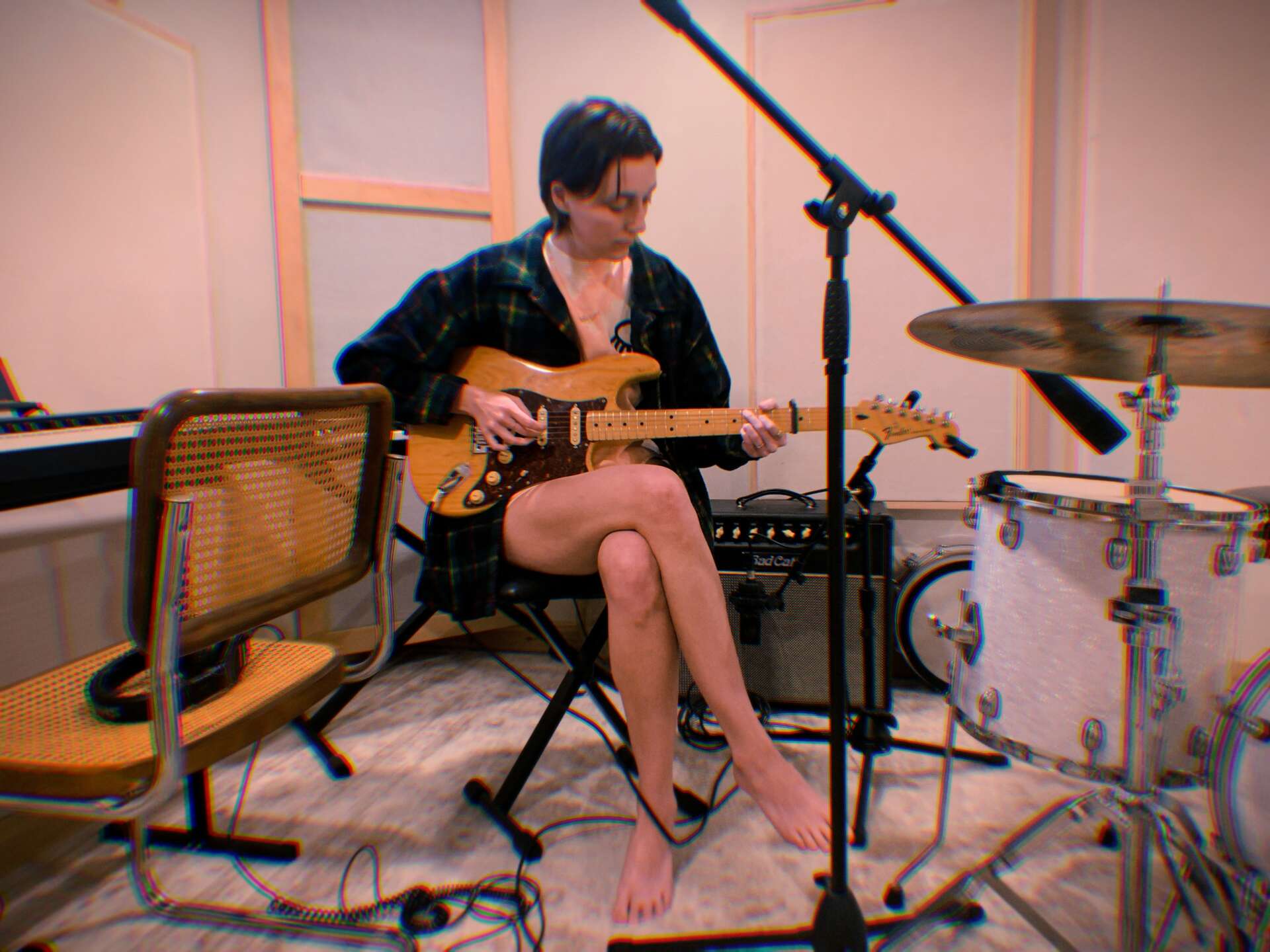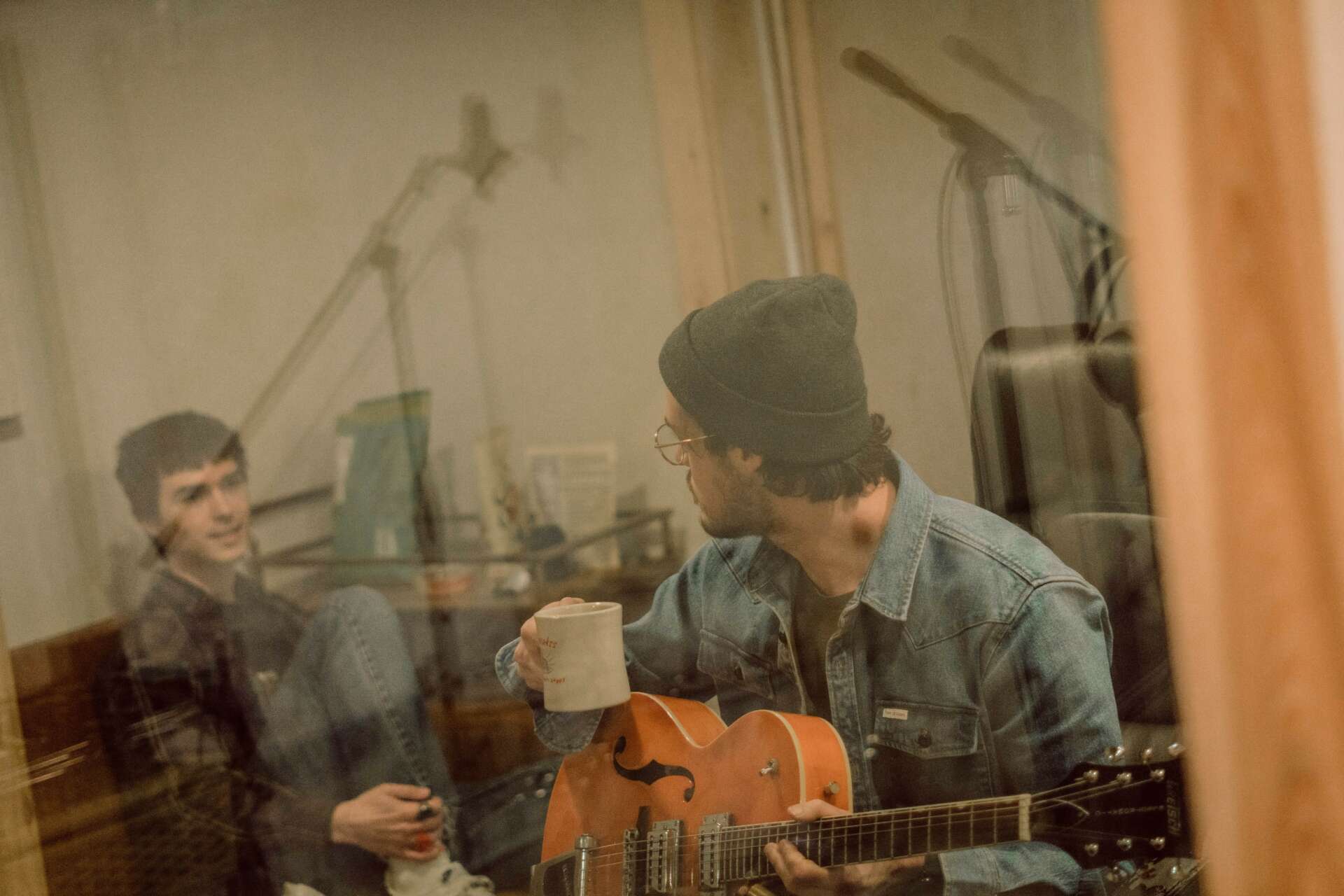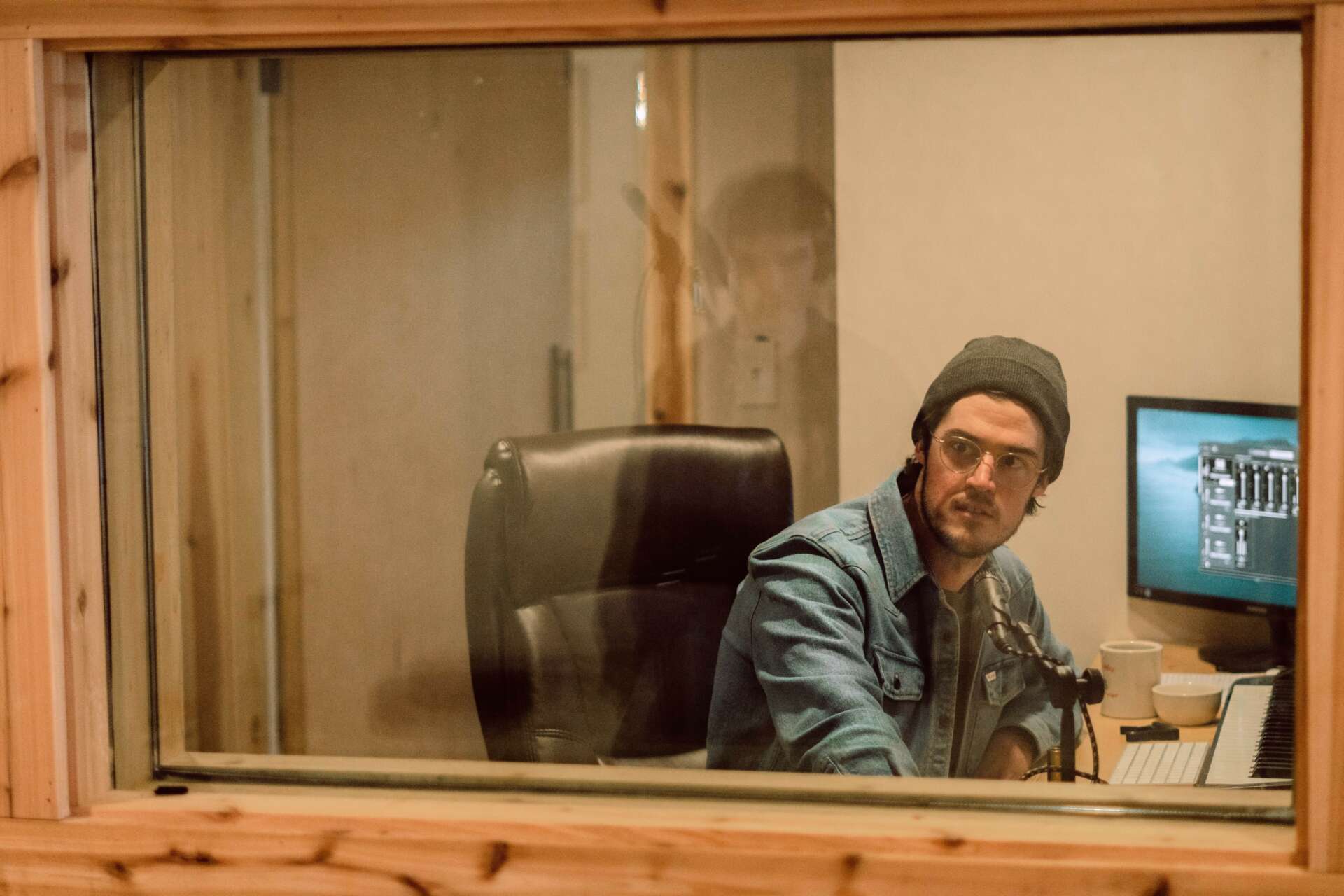We recently connected with Garrett Langebartels and have shared our conversation below.
Garrett, appreciate you joining us today. Can you talk to us about how you learned to do what you do?
As a multi-disciplinary artist, I have a hard time separating one of my creative expressions from another. I make my living making music, but I live making art. Learning the craft looked more like learning to live the life of an artist. For me the craft is more a way of seeing the world, so from early on that meant expressing my creative intuitions with whatever I had available to me. When I was very young, it was off-brand Crayola water color paints and a toy bass guitar my dad made me for my 4th birthday. That evolved into a $50 acoustic guitar, then an electric, then hand-me-down recording equipment and 15 years later a full-time career in music production. As I have grown, that mindset has permeated everything I do. When I cook, I wonder how I can bring beauty. When I bought my home, I wondered how I could bring life back to my small neglected city block. When I am in conversation, I practice curiosity, trusting that curiosity will lead to discovery eventually. When it came time to start my production business, it would have been too easy busying my mind with imposter syndrome, wondering if my equipment was professional enough or my space was cool enough. When it came down to it, I opened with a less than optimal space, minimal equipment and underdeveloped skills. The thing that made all of that eventually work was a commitment to the process. Creativity looks something like starting, encountering a problem, attempting to fix the problem, failing, trying again, failing, getting stoked on an idea, hating it, failing (insert a few more cycles depending on how its going), and ultimately discovering something you had no idea you were looking for. Those first few months were equal parts raw and exciting. They were the most intensive opportunity I had ever had to take a philosophy from a peripheral ideal to a practiced lifestyle.

Awesome – so before we get into the rest of our questions, can you briefly introduce yourself to our readers.
To put it simply, I am a record producer. I provide the general services around making a record, out of my cozy 300sf recording studio. Depending on the project, I could be a co-writer, session player, part writer, tracking engineer, mixing engineer and sometimes just a mastering engineer. Generally, when a collaborator comes to me, I will take them through a sort of discovery process where I help them determine what the project is, what holes they are looking to fill and how I might be able to help them do that. From there, I am part project manager, part co-creator and part gentle critique. The goal is, create something that is as good as possible in the time allotted and remain friends when its over. I would say a hidden part of the job, and one that the whole thing hinges on, is being a steady support for the artist. Making a record is a lot of fun but can be grueling. Being self critical a few days a week for sometimes up to a year can wear on you. As a producer, I know I have to be completely committed to the process. It has to be a lifestyle. In moments it needs to be loose and fun, in others focused and in others it needs to be still. We live in a society built on extraction. As a result, we think a project is successful when we draw the most out of it as fast as possible. That’s a fruitless path. I think it is important to know that sometimes the best way to move forward is to stop and take a break. Its a little counter-intuitive but it is like resting when you are sick or sleeping or eating. We need to maintain the health of our creative minds and as a producer, I take it on myself to be an outside observer of the artist acting as a voice that pushes when the energy is there, stops momentum when the energy is out of control and helps determine when something is actually done. I am not just a recording studio or a mixing engineer… I am in it to collaborate and make something that touches on the full human behind the song. I think that’s what good art does, and in general I think that is what good business does as well.
When it comes to the type of folks who choose to work with me, I find they are people of a similar mindset first. Most often, I am hired by singer-songwriter types. As a singer-songwriter myself, I think its a language I speak. I am looking to build a world that tells the story of each song or record. I want to know where someone is coming from, where they are and where they are going so that we can communicate as deeply as possible. There are many things that I am proud of that have come out of that, but the thing I am most proud of is the emerging community of makers I have gotten to know. I have been able to walk several artists in a wide variety of genres and ages through their first projects. This can be a very lonely process so it has been really special to see those artists connecting with each other. I want to help create a music scene here that represents and supports the people and the place we all live in, similar to Seattle, Nashville, Toronto, New York, New Orleans… These places all sound like they feel when you are there and I think Indianapolis has the same potential. That’s why I am so passionate about helping artists tell their stories. Ultimately if a community of people commits to that, then the result is a sound all their own. I obviously am not an island in doing that. I love the sound of several of the other studios and producers in town. My goal is just to perpetuate and live an ethos that I believe will aid in what I think is a shared goal in the music community here. While we all have businesses, I think most of us aren’t as interested in competition as much of the capitalistic side of the business world is. Most artists intuitively know competition has a way of maiming creative intention. When one of us makes better, deeper work it has a way of challenging all of us. I am incredibly thankful to play whatever small role in that I occupy.

In your view, what can society to do to best support artists, creatives and a thriving creative ecosystem?
Art is an interesting thing in modern times. We have been trained to consume the things people make more often than we have been trained to engage with them. When emotional expression becomes a commodity, its success can then be determined by how wide reaching it is, the R.O.I., and how easy it is to understand. The way we cultivate an ecosystem of creativity is exactly the same way we cultivate a natural ecosystem. Over the past few years I have been wading into the waters of growing a small subsistence garden. My first year almost nothing grew. I thought, maybe I didn’t offer enough water. My second year, I had some tomato’s and herbs grow, but not much else. Then I though, maybe its a soil issue, so I began composting and had a dump truck of higher quality soil dropped off. I asked questions to people I knew who had successful gardens and I collected all of that information and most of the garden grew. For next year, I saved the seeds of some of the more successful plants, I noted what didn’t grow in certain areas and I will adapt for the next season. Like gardening, art requires a person to cultivate within themselves an awareness of themselves, the people around them and their role in their ecosystem. These are the universal things art most often is reaching to comment on. This is not a linear path of discovery but it is an ideal for which the listener or onlooker should reach. The more a person learns to pay attention, the more questions they will have, which will lead to deeper attention. Once that cycle begins, the value of creativity becomes inherent. When we are paying attention, we see how our presence impacts society, causes us to realize the continuity of the human experience and it gives us a better ground to stand on to move a society into to a healthier future.
In a practical sense, this might mean a person going to a show of a band they love. They go and they pay money to receive an experience. We might think that artist’s talent is what we are paying for but by doing that, we often times cheapen what the artist is offering. Similarly, they often times bring an opening act. This is where the skill of paying attention can really be challenged. I am as guilty as most with this, but the opening act typically is presenting something to you for the first time. You are having the rawest experience of their work possible. In that moment, many people can’t handle the amount of attention required to engage with that work, so they get a drink from the bar or talk to their friends. When you learn to engage, you look at an opening act and see that their creative intention and expression has no less value than the headliner. Like that, local businesses in comparison to our favorite big box stores, are often places where people in our ecosystems have found products that are not cheaply made or have been ascribed a value that is beyond the price tag as well. When we choose to engage places like that, artists who are being honest and and when we engage ourselves honestly, the ecosystem begins to thrive. Ecosystems adapt on the microlevel to maintain balance and health. We have to do the same.


Is there mission driving your creative journey?
My goal on my creative journey is to become more fully human. That can feel a little esoteric to say, but I think in 2024, we are still living under the polluted cloud of the industrial revolution. I don’t think enough of us have stopped to ask how, what 500 years ago would have felt like an impossible shift, has impacted us on a very basic level. In that time, we went from a predominately agrarian village type way of life to living in single family homes or apartments, where the only times we are outside are when we go to our cars or the bus. Most people went from being craftspeople to working “white collar jobs”. The result is a society that is disconnected from themselves, each other and their ecosystem. A crafts person, by nature, is made successful when their focus is on learning every intricacy of their medium. My work, my sound, the things I make, all have an attempt to capture the natural interaction I have with the world around me. I think that’s why I sometimes find it difficult to define what I do. I make my living making music, but everything I do is my art. When I make furniture for my family to sit on, I am paying attention to every movement in the grain of wood. When I talk to my child, I am challenged to wait until he finishes what he is saying before I introduce my part of the conversation, even if he takes 5 minutes to get a sentence out. Becoming human requires a person to connect, not as the anthropocentric self, but has a harmonious self. We do not define the world around us, we work in and with the world around us. Getting back to that more indigenous mindset feels unnatural at first. But, like learning to listen to an opening act, it becomes more interesting and enriching the more you choose to follow the path.

Contact Info:
- Website: naptimerecordings.com
- Instagram: @naptimerecordings
Image Credits
Photos by Kristin Kirk


